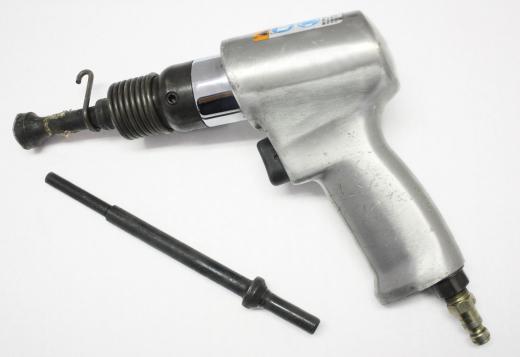Compressed air tools are powered by air compression, which is supplied by an air compressor connected to the tool with an air hose. The air compressor creates power by condensing and compressing air to as little as 1/8 its original volume. As the air attempts to expand to its original volume, it creates energy that is harnessed as power. A compressed air tool is also called a pneumatic tool. Examples of a compressed air tool include a nail gun, wrench, drill, and hammer, though this is by no means an exhaustive list.
Manufacturing facilities, construction companies, and other industrial facilities might use a compressed air tool for a variety of reasons. A compressed air tool is often lighter in weight than the electric version of the same tool, allowing workers to use the tool more comfortably and for longer periods of time. Similarly, a compressed air tool can be more powerful than an electric tool without consuming as much energy. Compressed air tools can also save time, especially in very large projects. Painting, grinding, sandblasting, and many more industrial procedures often rely on compressed air power.

A compressed air tool may get its compressed air supply from one of many different types of air compressors, all with different capacities and capabilities. An industry’s choice of air compressor may be based on several factors, including end-use air quality requirements, power and energy use, and cost efficiency versus production.
Craftsmen often prefer a compressed air tool over an electric power tool for certain jobs. Drywall and trim work are both made easier and accomplished more quickly with pneumatic tools. The most commonly purchased compressed air tool duo for homeowners is the pneumatic drill and nail gun. If you are a homeowner shopping for compressed air tools, be sure you understand how different models work and how the power is supplied. Read the manufacturer’s directions for use and maintenance, and be sure to have the proper sized hoses, fittings, and air compressor.
